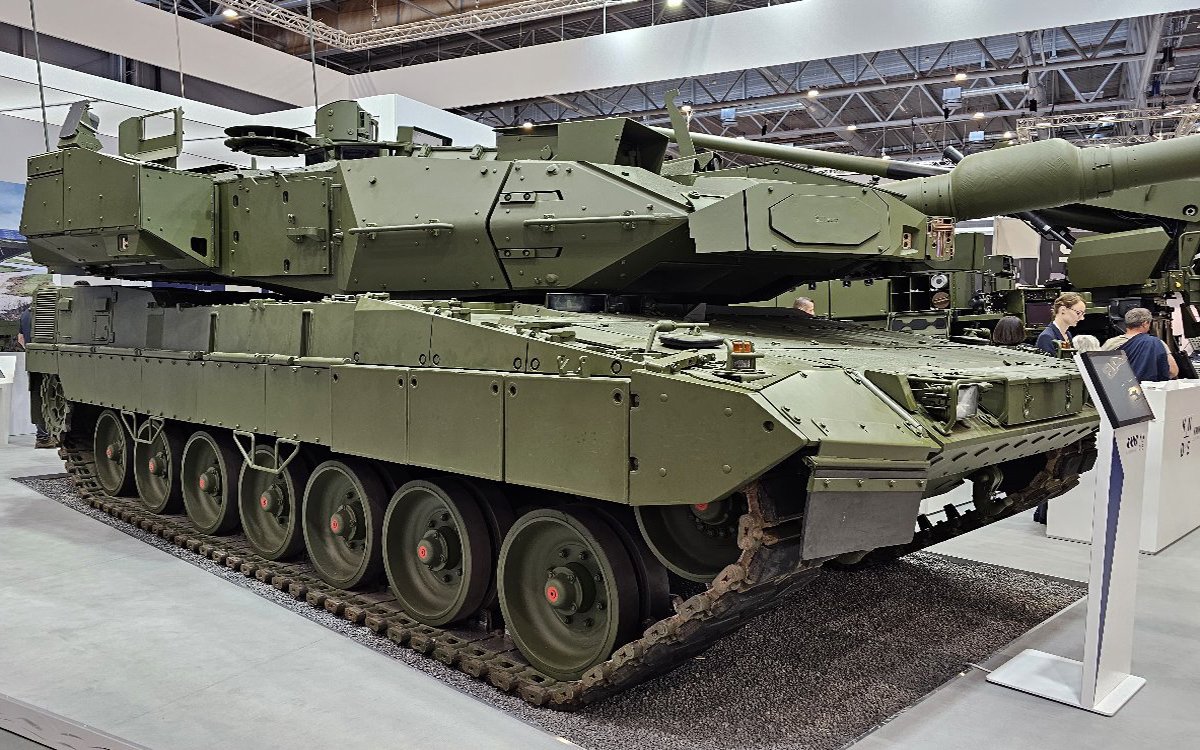With conventional warfare re-emerging in Europe, numerous European nations have embarked on significant military modernization efforts. The Netherlands has recently joined this initiative by revamping its armed forces with Main Battle Tanks (MBTs) following a decade of stagnation.
The Dutch government is planning to reintroduce a tank battalion as part of an overall investment in the country’s armed forces in what appears to be a response to the Russian invasion of Ukraine. This was revealed in a defense paper published on September 5 that calls for building capability in the wake of the Ukraine war.
The Defense White Paper states that the country must invest an additional $26.6 billion, for “the Netherlands must actively contribute to deterring adversaries to prevent armed conflict after a long period of peace in Europe.”
The Netherlands is not the only country to make big investments. Several countries that had been content to allocate only essential funds for military modernization, under the assumption that the age of conventional warfare was over, are now compelled to invest significantly and upgrade their military capabilities.
The Dutch funding boost and new weaponry, notably tanks, have been primarily driven by the ongoing conflict in Ukraine, although the White Paper also highlights growing tensions in the Middle East and China’s growing efforts to bend international laws to its advantage.
The White Paper quotes Minister of Defense Ruben Brekelmans, saying, “Russia’s unbridled aggression in Ukraine shows that an attack on the NATO alliance is no longer inconceivable.”
Ruben warns that the security and economy of the Netherlands would be significantly impacted by such an attack.
The Dutch media reported that the setting up of the tank battalion will cost the country between 260 million and 315 million euros ($347.82 million) each year. However, the whopping cost will assist the Netherlands meet the NATO target of allocating at least 2% of its GDP to defense. Moreover, the defense paper states that the Dutch require “heavier combat capabilities for land operations,” which the tank battalion will help meet.

Though the Dutch government has yet to officially name the tank it is planning to acquire, speculations are rife that it will be the German Leopard-2 MBTs.
The war in Ukraine and its subsequent use of Leopard-2 tanks have propelled fresh sales of Krauss-Maffei Wegmann tanks. The Dutch Army already uses Leopard-2 MBTs.
The Dutch government had to abandon its tanks earlier due to a lack of finances. Following budget reductions in 2011, the nation that once maintained approximately 1,000 tanks during the peak of the Cold War disbanded its two remaining tank battalions.
The Royal Netherlands Army was the only NATO member to completely abandon its tanks while retaining its self-propelled artillery and infantry fighting vehicles.
Since 2015, the nation has leased 18 Leopard 2 A6 tanks from Germany. Last year, the German government invited the Dutch to participate in a cooperative procurement plan for the Leopard 2 A8 main combat tank. However, the Netherlands chose to defer the decision due to a caretaker government at the helm of affairs.
Various reports and military analysts are currently forecasting that the Dutch government may opt for the Leopard-2 A8 variant. The Leopard 2A8 has new defensive features, such as the most recent iteration of the Trophy active standoff protection system, even though it has the same 120mm main gun, engine, and transmission as its predecessor, the Leopard-2 A7V.
The Leopard 2A8 boasts several notable enhancements, such as upgraded armor with increased protection levels, a new engine that produces roughly 100 more horsepower, and a 360° radar system. Germany has already approved a purchase of 105 of these MBTs.
While the Defense White Paper does not specify a schedule for purchasing the tanks, the development has been cited as a breakthrough for the country, which has been frugal in its defense spending with ground-based systems.
Besides brand-new tanks, the Dutch are also buying stealth fighters and helicopters.
Netherlands Needs More F-35s & Choppers
According to the objectives outlined in the Defense White Paper, the Netherlands says it intends to purchase more F-35 Joint Strike Fighters and other systems, including N-90 helicopters, unmanned aircraft, and counter-drone equipment.
This is significant given that the Dutch F-35A stealth fighters are now nuclear-capable and have effectively replaced the F-16s in the Quick Reaction Alert (QRA) missions. The F-35A was also operationally certified to carry the B61-12 “thermonuclear gravity bomb,” making it a “dual-capable” aircraft, as revealed by the F-35 Joint Program Office (JPO).
There is, however, no information on the number of F-35As that the Dutch government would be willing to procure.
The country is also looking to bolster its helicopter fleet with more NH-90 choppers, a multi-role, medium-sized military helicopter for land and maritime operations. T
he Netherlands and a few other participating nations signed an agreement in June 2000 to produce 243 NH90 helicopters. The Royal Netherlands Navy (RNLN) placed an order for 20 NH90 units in total.
The decision to buy additional NH-90 choppers comes months after the government announced in January this year that it was undertaking a mid-life upgrade for its entire fleet of 19 NH90 maritime combat helicopters.
At that time, it stated that the decision was to equip the airframes with the new connection-22 data system, which is the new standard for NATO interoperability while maintaining the operational capabilities of the weapon systems.
The White Paper also demands that the Navy acquire modern weaponry and anti-submarine frigates. The Netherlands plans to purchase four brand-new, conventionally powered submarines from France to replace its Cold War-era Walrus class ones and support its updated defense strategy, which includes long-range strikes.
State Secretary for Defense Gijs Tuinman dubbed the White Paper detailing the investments “the most ambitious military agenda in modern Dutch history.”
- Contact the author at sakshi.tiwari9555 (at) gmail.com
- Follow EurAsian Times on Google News